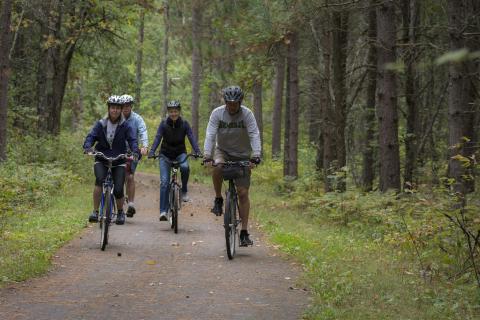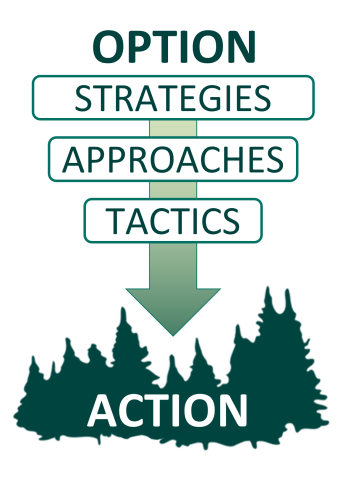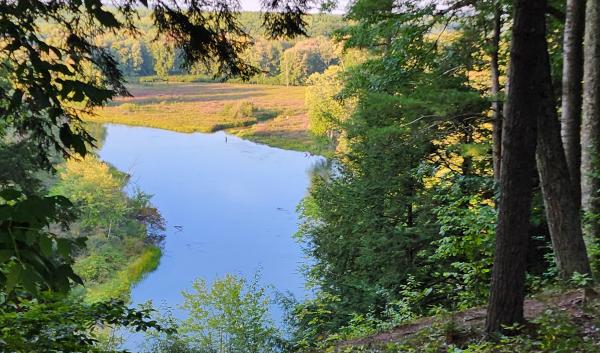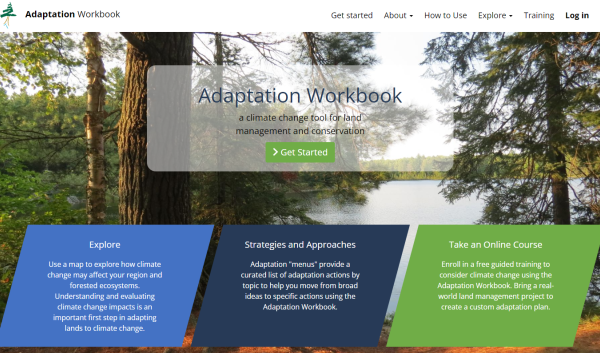Climate change is altering the opportunities and demand for outdoor recreation, as well as the infrastructure that supports it, in a number of ways.
In the United States, federal lands are host to over 938 million recreational visits per year and are an important contributor to the economy. Climate change will alter the dynamics of outdoor recreation and the infrastructure that supports it in a number of ways, and these effects will vary greatly by season, geographic location, and population demographic.
Effects from Climate Change
Climate change will alter opportunities and demand for outdoor recreation through altered winter weather conditions and season length, climate-driven changes in user preferences, and damage to recreational infrastructure, among other factors. To ensure that outdoor recreation remains sustainable in the face of these challenges, natural resource managers may need to adapt their recreation management. The use of climate vulnerability assessments for natural communities can help managers characterize and assess site risks.

Adaptation in Action
Decision makers seeking to maintain or enhance recreational opportunities need tools and resources to assist in translating broad climate adaptation concepts into specific, tangible actions. Using a combination of in-depth interviews with recreational managers and a review of peer-reviewed literature and government reports, we developed a synthesis of impacts, strategies, and approaches, and a tiered structure that organizes this information.
The Outdoor Recreation Adaptation Menu is designed to be used as a stand-alone resource, and it can also be used to supplement structured adaptation planning with the Adaptation Workbook process (published in Forest Adaptation Resources: Climate Change Tools and Approaches for Land Managers).

Strategies and approaches
The 6 strategies, 25 approaches, and 100+ tactics were developed through an assessment of existing adaptation tools, focus group discussions, and workshops with natural resource professionals.
Adaptation strategies are very general and can be applied in many ways across different ecosystems and cultural contexts. Adaptation approaches are more specific, describing in greater detail how strategies could be put into practice.
These strategies and approaches are designed to serve as stepping stones to allow natural resource managers and planners to translate broad concepts into targeted and specific actions (tactics) for putting climate change adaptation into practice to achieve a specific management objective in a specific location.
Example tactics are provided in the menu as illustrations of a few of the possible actions that could implemented for climate adaptation.
Menu of Strategies and Approaches for Wildlife Management
-
Approach 1.1 Stabilize shorelines to reinforce vulnerable infrastructure.
Approach 1.2 Maintain, improve, and construct infrastructure using materials that can withstand a range of climate stressors.
Approach 1.3 Maintain, improve, and construct infrastructure using designs that reduce impacts from variable water levels.
Approach 1.4 Employ technological innovations to maintain the viability of developed winter recreation areas.
Approach 1.5 Employ protective measures to minimize damage from disturbance events.
-
Approach 2.1 Maintain and increase the capacity of stormwater infrastructure to accommodate variable precipitation.
Approach 2.2 Enhance the capacity of natural systems to accommodate variable precipitation.
Approach 2.3 Minimize impacts of existing roads and trails that are compromised by changing conditions.
-
Approach 3.1 Reduce visitor impacts to vulnerable areas.
Approach 3.2 Optimize timing of opportunities to align with changing conditions.
Approach 3.3 Provide alternative means of access.
-
Approach 4.1 Train employees to be aware of climate-exacerbated risks to public safety.
Approach 4.2 Prevent or minimize hazards from wildland fire.
Approach 4.3 Prevent or minimize hazards from extreme heat events.
Approach 4.4 Improve public awareness regarding climate change and climate-exacerbated risks.
Approach 4.5 Communicate the reality of environmental change.
-
Approach 5.1 Recondition recreation-related infrastructure located in vulnerable areas.
Approach 5.2 Use appropriate vegetation to increase resilience of recreation settings to climate-related stressors.
Approach 5.3 Alter infrastructure to better capture and use natural and man-made snow.
Approach 5.4 Employ snow-based options that are functional in low-snow conditions.
-
Approach 6.1 Increase four-season and non-skiing recreation opportunities at winter sports areas.
Approach 6.2 Relocate existing infrastructure and opportunities to areas with less risk of climate-exacerbated damage.
Approach 6.3 Integrate long-term siting and climate considerations into recreation management.
Approach 6.4 Use materials and designs that are impermanent.
Approach 6.5 Remove or decommission vulnerable infrastructure.
Citation
O’Toole, D.; Brandt, L.A.; Janowiak, M.K.; Schmitt, K.M.; Shannon, P.D.; Leopold, P.R.; Handler, S.D.; Ontl, T.A.; Swanston, C.W. Climate Change Adaptation Strategies and Approaches for Outdoor Recreation. Sustainability 2019, 11, 7030. https://doi.org/10.3390/su11247030
Acknowledgements
The Northern Institute for Applied Climate Science and regional partners led the development of the forest adaptation strategies and approaches, which can be used with the Adaptation Workbook process (published in Forest Adaptation Resources: Climate Change Tools and Approaches for Land Managers). The Northern Institute of Applied Climate Science (NIACS) a collaborative, multi-institutional partnership led and supported by the USDA Forest Service.



